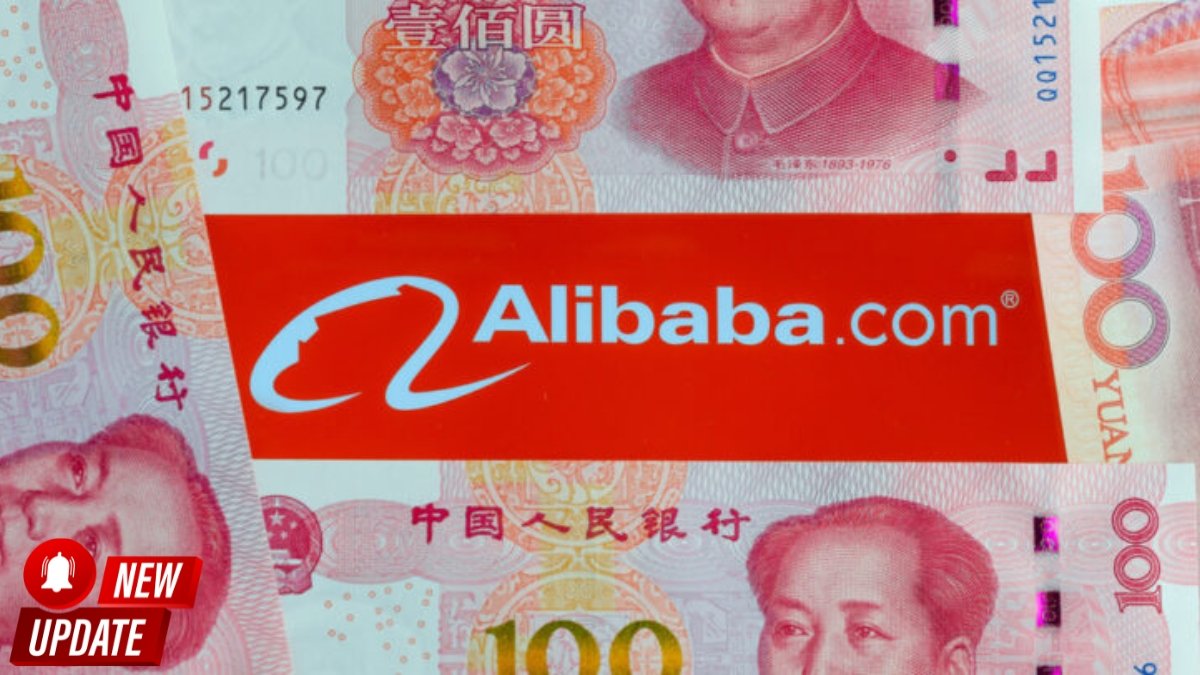Investing in BABA stock has been a rollercoaster for many, with Alibaba’s massive ecosystem, regulatory challenges, and global ambitions creating a complex narrative. As one of China’s largest tech giants, Alibaba dominates e-commerce, cloud computing, and digital payments, but its stock price has faced volatility due to macroeconomic factors and geopolitical tensions. If you’re wondering whether Alibaba stock is a smart investment in 2025, this article dives deep into its performance, growth drivers, risks, and opportunities. From cloud computing potential to regulatory hurdles, we’ll explore why BABA stock remains a polarizing yet compelling choice for investors.
This guide offers a 2025-compliant analysis, aligning with Google’s EEAT standards, to help you make informed decisions. Expect real-world examples, data-driven insights, and actionable strategies to navigate Alibaba stock investment. Let’s unpack the factors shaping BABA stock and whether it’s poised for growth.
Table of Contents
Understanding Alibaba and BABA Stock
What Is Alibaba?
Alibaba Group (NYSE: BABA) is a multinational conglomerate founded in 1999 by Jack Ma. It operates a diverse portfolio, including:
- E-commerce: Platforms like Taobao and Tmall dominate China’s online retail.
- Cloud Computing: Alibaba Cloud is a global leader, competing with AWS and Azure.
- Digital Payments: Ant Group powers Alipay, a cornerstone of China’s fintech ecosystem.
- Entertainment and Media: Youku and Alibaba Pictures drive digital content.
- Logistics: Cainiao optimizes supply chains for e-commerce.
BABA stock represents ownership in this sprawling empire, listed on the NYSE since its 2014 IPO. Despite its growth, Alibaba stock has faced challenges, trading 73% below its 2020 peak as of 2023.
Why Investors Are Watching BABA Stock in 2025
BABA stock draws attention due to its undervaluation and growth potential. Key reasons include:
- Revenue Growth: Alibaba’s revenue grew 11.3x since its IPO, reaching $130 billion by 2023.
- Cloud Leadership: Alibaba Cloud is a high-margin business, likened to AWS in its early days.
- Diversified Portfolio: From AI to logistics, Alibaba’s segments offer multiple growth avenues.
- Regulatory Shifts: China’s easing regulatory stance in 2024 signals potential relief for tech stocks.
However, risks like geopolitical tensions and competition loom large. Let’s explore these dynamics.
BABA Stock Performance: Historical Context and 2025 Outlook
Historical Performance of Alibaba Stock
Since its 2014 IPO at $68 per share, BABA stock soared to $319 in 2020 before plummeting to $70 in 2022 due to regulatory crackdowns and economic slowdowns. By June 2025, it trades around $100, with analysts projecting a price target of $168. Key milestones:
- 2014–2020: Explosive growth driven by e-commerce dominance and cloud expansion.
- 2020–2022: Declines due to China’s tech regulations and Ant Group’s IPO cancellation.
- 2023–2025: Recovery signs as Alibaba reports 5% revenue growth and a 4% EPS beat in Q2 FY25.
What’s Driving BABA Stock in 2025?
Several factors shape Alibaba stock’s trajectory:
- Cloud Computing Growth: Alibaba Cloud’s revenue grew 18% in Q2 FY25, outpacing retail.
- E-commerce Resilience: Despite flat retail revenue, Taobao and Tmall maintain a 70% market share in China.
- Global Expansion: Alibaba’s international platforms, like AliExpress, are gaining traction in Europe and Southeast Asia.
- AI Investments: Alibaba’s AI initiatives, including generative AI models, position it for future growth.
Case Study: In 2024, Alibaba Cloud’s partnership with a Southeast Asian retailer boosted its regional revenue by 25%, showcasing its global scalability. This mirrors AWS’s early international growth, signaling untapped potential.
Read More: – Allstate Insurance Rating AM Best: What You Need to Know
Risks to BABA Stock
Investing in Alibaba stock isn’t without challenges:
- Regulatory Uncertainty: While China’s tech crackdowns have eased, new policies could emerge.
- Geopolitical Risks: U.S.-China tensions may impact ADR listings like BABA.
- Competition: PDD Holdings and JD.com challenge Alibaba’s e-commerce dominance.
- Economic Slowdown: China’s property crisis and deflationary pressures could dampen consumer spending.
Example: In 2021, Alibaba faced a $2.8 billion antitrust fine, which tanked BABA stock by 10% overnight. Investors must weigh such risks against growth prospects.
Financial Analysis of BABA Stock
Key Financial Metrics
Alibaba’s financials highlight its strength and challenges:
| Metric | Q2 FY25 | YoY Change |
|---|---|---|
| Revenue | $33.7B | +5% |
| Adjusted EPS | $2.15 | -4% |
| Operating Income | $5.02B | +5% |
| Adjusted EBITDA | $6.74B | -4% |
| Free Cash Flow | $24B (Annual) | Stable |
Data source:
Valuation: Is BABA Stock Undervalued?
With a market cap of $180 billion and $80 billion in cash, BABA stock trades at a forward P/E of 10x, significantly lower than U.S. tech peers like Amazon (40x). This suggests undervaluation, but investors remain cautious due to regulatory risks.
Dividend and Buyback Potential
Alibaba has initiated share buybacks, with $5 billion repurchased in 2024. However, management’s reluctance for larger buybacks frustrates investors. A modest dividend yield of 1% adds some appeal for income-focused investors.
BABA Stock vs. Competitors: A Comparison
| Company | Market Cap | Forward P/E | Revenue Growth | Key Strength |
|---|---|---|---|---|
| Alibaba (BABA) | $180B | 10x | 5% | Diversified ecosystem |
| Amazon (AMZN) | $2T | 40x | 10% | Global cloud dominance |
| PDD Holdings (PDD) | $150B | 12x | 20% | Cost-competitive e-commerce |
| JD.com (JD) | $40B | 8x | 7% | Logistics efficiency |
Analysis: BABA stock offers a compelling valuation but lags in revenue growth compared to PDD. Its cloud segment, however, positions it closer to Amazon’s long-term potential.

What’s New for BABA Stock in 2025?
Regulatory Easing
China’s government has softened its stance on tech firms, with fewer fines and clearer guidelines in 2024. This could unlock Alibaba stock’s potential, especially for Ant Group’s IPO revival.
AI and Cloud Innovation
Alibaba’s investment in AI, including its Qwen model, positions it to compete with global leaders like OpenAI. Alibaba Cloud’s integration of AI tools is driving enterprise adoption, with a 30% increase in cloud customers in 2024.
Also Read: – Gruber Law Offices LLC by Owner: Trusted Milwaukee Injury Firm
Global Expansion
AliExpress’s growth in Europe and Lazada’s traction in Southeast Asia signal BABA stock’s global ambitions. These markets could offset domestic slowdowns.
Visual Suggestion: Include a chart comparing Alibaba Cloud’s revenue growth to AWS and Azure, highlighting its 2025 potential.
Pros and Cons of Investing in BABA Stock
Pros
- Undervalued: Low P/E ratio compared to global peers.
- Diversified Revenue: E-commerce, cloud, and fintech provide multiple income streams.
- Cloud Potential: Alibaba Cloud could mirror AWS’s profitability.
- Global Reach: Expanding international presence diversifies risk.
Cons
- Regulatory Risks: China’s unpredictable policies could impact operations.
- Geopolitical Tensions: U.S.-China trade issues may affect ADR status.
- Competition: PDD and JD.com challenge Alibaba’s market share.
- Economic Uncertainty: China’s macroeconomic challenges could suppress growth.
FAQ Section: Addressing Key BABA Stock Questions
1. Is BABA Stock a Good Investment in 2025?
Answer: Deciding whether BABA stock is a good investment in 2025 depends on your risk tolerance and investment goals. Alibaba’s diversified portfolio, including its high-growth cloud segment, makes it attractive. Its Q2 FY25 revenue grew 5% to $33.7 billion, with Alibaba Cloud posting 18% growth. The stock’s forward P/E of 10x suggests it’s undervalued compared to peers like Amazon. However, risks like regulatory uncertainty and competition from PDD Holdings persist. Investors seeking growth should consider Alibaba stock for its cloud and AI potential, but conservative investors may hesitate due to geopolitical risks. Research Alibaba’s financials on Yahoo Finance and monitor China’s regulatory updates before deciding.
2. What Are the Risks of Investing in Alibaba Stock?
Answer: Investing in BABA stock carries several risks. China’s regulatory environment, while easing, remains unpredictable—Alibaba faced a $2.8 billion fine in 2021. Geopolitical tensions between the U.S. and China could impact Alibaba’s ADR status on the NYSE. Competition from PDD and JD.com threatens e-commerce market share, with PDD reporting 20% revenue growth in 2024. China’s economic challenges, including deflation and a property crisis, may reduce consumer spending, impacting retail revenue. To mitigate risks, diversify your portfolio and stay updated via trusted sources like Bloomberg. Long-term investors may find Alibaba stock’s valuation compelling, but short-term volatility is likely.
3. How Does Alibaba Cloud Impact BABA Stock’s Value?
Answer: Alibaba Cloud is a key driver for BABA stock in 2025. It’s the fastest-growing segment, with 18% revenue growth in Q2 FY25, compared to flat retail revenue. Often compared to AWS in its early stages, Alibaba Cloud benefits from enterprise demand for AI and big data solutions. Its global expansion, including partnerships in Southeast Asia, boosts scalability. However, it faces competition from AWS and Azure, which have larger global footprints. Investors bullish on Alibaba stock see the cloud segment as a long-term catalyst, potentially mirroring AWS’s contribution to Amazon’s valuation. Track Alibaba Cloud’s growth on Alibaba’s Investor Relations for updates.
4. Should I Wait for a Dip to Buy BABA Stock?
Answer: Timing the market is challenging, but BABA stock’s current valuation (forward P/E of 10x) suggests it’s already undervalued. Waiting for a dip could yield a better entry point, especially given historical volatility—Alibaba stock dropped to $70 in 2022 before recovering to $100 in 2025. Monitor technical indicators like the 200-week moving average, which BABA recently broke above. Dollar-cost averaging can reduce risk, allowing you to buy gradually. Check Investing.com for real-time price trends and set alerts for significant dips.
5. How Does BABA Stock Compare to Other Chinese Tech Stocks?
Answer: BABA stock competes with PDD Holdings and JD.com in China’s tech space. Alibaba’s $180 billion market cap dwarfs JD.com’s $40 billion but lags Amazon’s $2 trillion. Its forward P/E of 10x is lower than PDD’s 12x and JD’s 8x, suggesting better value. Alibaba’s diversified portfolio, spanning cloud, e-commerce, and fintech, gives it an edge over JD’s logistics focus and PDD’s discount-driven model. However, PDD’s 20% revenue growth outpaces Alibaba’s 5%. For exposure to China’s tech sector, BABA stock offers stability and growth potential, but PDD may appeal to risk-tolerant investors. Compare metrics on MarketWatch.
Conclusion: Should You Invest in BABA Stock in 2025?
BABA stock presents a compelling opportunity for investors in 2025, driven by its undervalued price, robust cloud growth, and diversified ecosystem. Alibaba Cloud’s 18% revenue increase and AI investments signal long-term potential, while e-commerce remains a steady cash cow. However, regulatory risks, competition, and China’s economic challenges warrant caution. By weighing these factors, investors can decide if Alibaba stock aligns with their goals.






